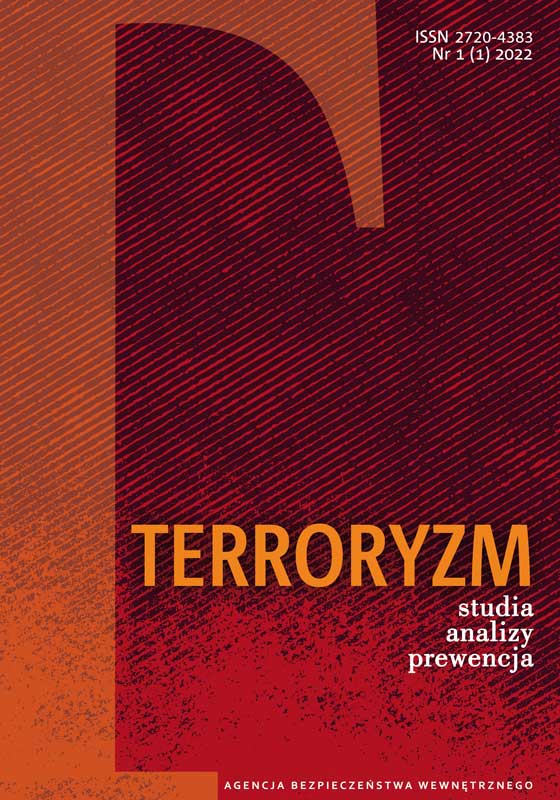Bezzałogowe statki powietrzne jako źródło zagrożeń infrastruktury zaopatrzenia państw w energię elektryczną oraz proponowane metody ochrony tej infrastruktury
Unmanned aerial vehicles as a source of threats to the state’s electricity supply infrastructure and the proposed methods of protecting this infrastructure
Author(s): Jędrzej ŁukasiewiczSubject(s): Politics / Political Sciences, Politics, Environmental and Energy policy
Published by: Wydawnictwo Uniwersytetu Jagiellońskiego
Keywords: unmanned aerial vehicles; power grid; protection of facilities critical to national security; anti-drone prevention
Summary/Abstract: Bezzałogowe statki powietrzne stanowią zagrożenie dla obiektów ważnych dla bezpieczeństwa państwa. Ich uniwersalność wynikająca z cech poszczególnych typów statków powietrznych powoduje, że skala sposobów ich użycia w atakach jest praktycznie nieograniczona. Dla bezpieczeństwa państwa niezwykle istotny jest system zaopatrzenia w energię elektryczną. Ze względu na rozległość sieci przesyłowych oraz znaczną liczbę punktów węzłowych tych sieci należy postawić pytanie, jak dalece system ten jest odporny na ataki terrorystyczne, zwłaszcza te przeprowadzone z zastosowaniem bezzałogowego statku powietrznego. W pracy autor dokonuje analizy ataku polegającego na spowodowaniu zwarcia instalacji elektrycznej z użyciem przewodu miedzianego podwieszonego pod bezzałogową platformę latającą. Implementacja opisanych w pracy zalecanych sposobów ochrony powinna doprowadzić do podniesienia poziomu bezpieczeństwa sieci przesyłowych. [Unmanned aerial vehicles pose a threat to objects important to national security. Their versatility, resulting from the characteristics of individual types of aircraft, means that the scale of their use in attacks is virtually unlimited. The electricity supply system is extremely important for state security. Due to the vastness of transmission networks and a significant number of node points of these networks, the question should be asked to what extent this system is resistant to terrorist attacks, especially those carried out with the use of unmanned aerial vehicles. In this paper, the author analyses an attack consisting in causing a short circuit of the electrical system with the use of a copper wire suspended under an unmanned aerial vehicle. The implementation of the recommended protection methods described in the paper should lead to an increased level of safety of transmission networks.]
Journal: Terroryzm. Studia, analizy, prewencja
- Issue Year: 2022
- Issue No: 1 (1)
- Page Range: 90-122
- Page Count: 33
- Language: Polish

